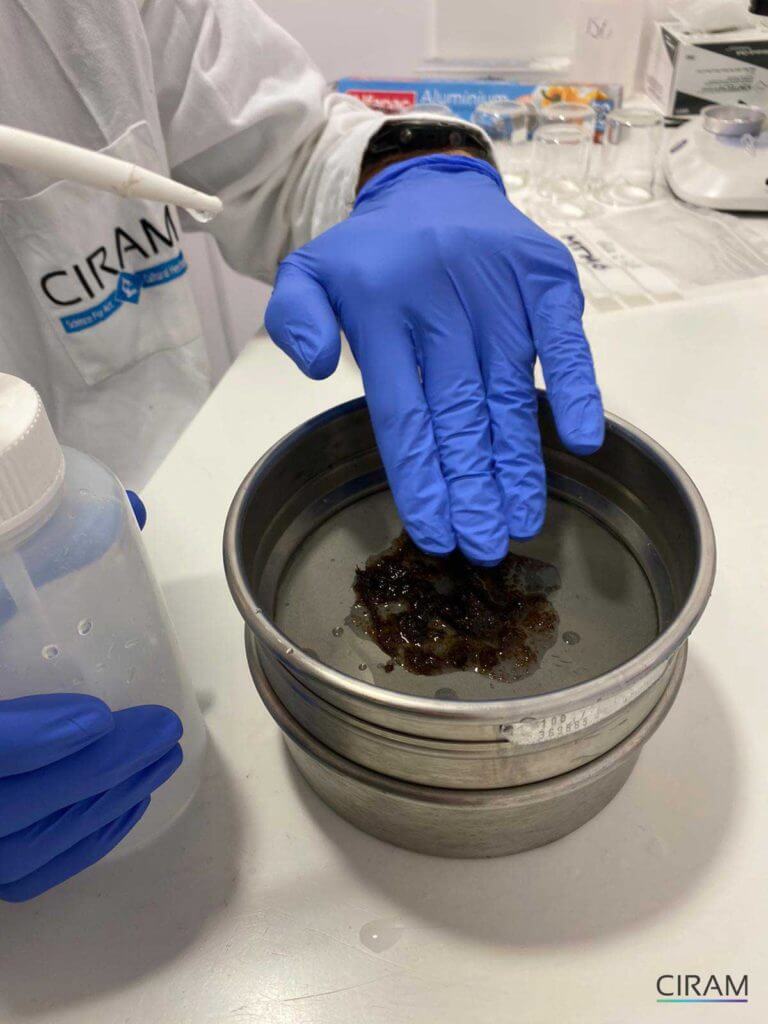Carbon-14 dating for peat and other organic sediments
Discover the use of carbon-14 for archaeological analysis of peat thanks to CIRAM laboratories.

Carbon-14 is a radioactive isotope found in all living organisms. This isotope can be used to date a large number of organic materials found in archaeological contexts.
Specialists in carbon-14 dating by AMS, our scientists analyze materials such as wood, bone, charcoal, but also peat and other organic sediments in the laboratory. Discover our peat analysis methods for an accurate dating of all your organic residues.
Precious information thanks to C14 analysis of peat
Peat bogs, present for more than 10,000 years in some areas, provide valuable information on environmental changes such as climatic and anthropological changes.
For example, it is important to be able to define chronologically the start of turfigenesis on an archaeological site in order to proceed with a paleoenvironmental reconstruction.
Thanks to the distribution of the dates obtained and the confrontation with geomorphological, paleoecological, and archaeological data, it is possible to trace the evolution and changes of landscapes and societies.
While radiocarbon dating is the most suitable method for the chronological setting of peatlands and other sediments, there are several methodological problems.
The different types of peatlands
It is possible to analyze and date several types of peatlands and organic sediments. For an accurate result, we take care to remove macro remains.
For silty peats that do not contain macro remains, we use organic sediment.
Fibrous peat (the most common for the samples we analyze) is a mixture of decaying plant remains and silty peat. For this type of peat, we extract the fibrous portion, which will undergo ABA (acid-base-acid) treatment to remove carbonates and humic and fulmic acids.
Sediment and peat analysis methods
Methods differ between silty peat and fibrous peat.
Silty peat is first sieved to 100 microns to remove microremains. Silty peats and the insoluble fraction of humic sediments are exclusively treated with acid to remove carbonates.
As for fibrous peats, they are first treated with acid, then undergo alkaline treatment and finally washed with acid to remove carbonates and humic acids.
It is also necessary to screen the soluble fraction of humic sediments to remove macro-retains. Once the fraction is clean, we use a hot acid treatment, repeated if effervescence persists, and then an alkaline treatment. Our scientists recover only the alkaline solution by centrifugation or filtration. Finally, an acid treatment is applied until precipitation.
As a general rule, the acid-washed and sieved organic sediment fraction will give a more accurate dating.
Results and calibration
Our scientists systematically calibrate the analyses using international standards. There is a difference between the gross age and the calibrated dates depending on the data and the estimated age of the peat. The gross age is expressed in BP years, i.e. before 1950. We always convert the raw ages into calibrated dates, which proceed from the correction by the calibration curve.
CIRAM laboratories accompany you in the interpretation of the results
Concerned with delivering results in accordance with the realities of the field, CIRAM laboratories always accompany the results with a precise commentary responding to your problems. We also remain at your service to provide additional information and discuss the results in order to advance your research and meet your needs in relation to the archaeological context.
Following up the results, dialogue between professionals and proximity, CIRAM laboratories deliver a serious expertise in collaboration with you.
